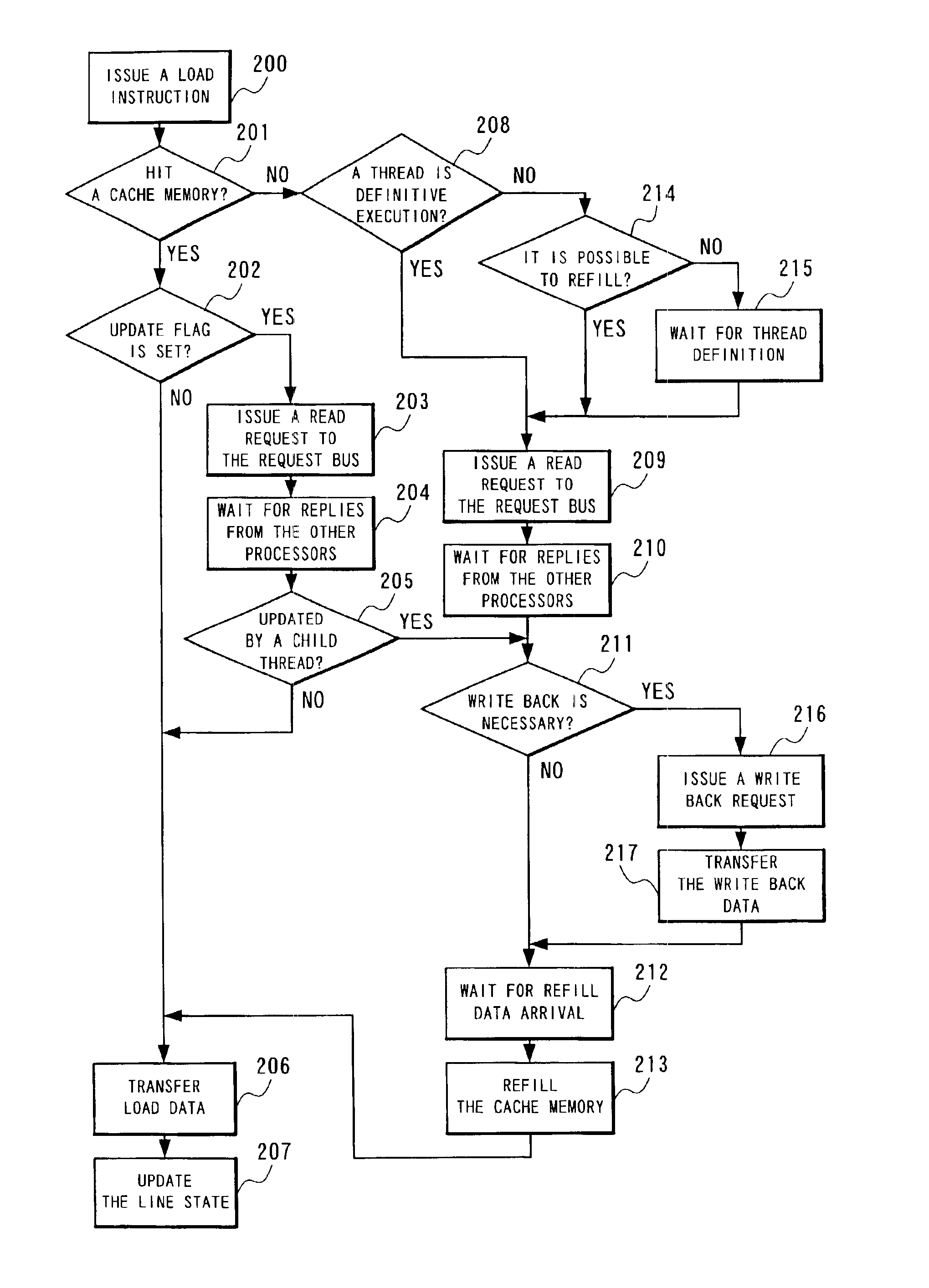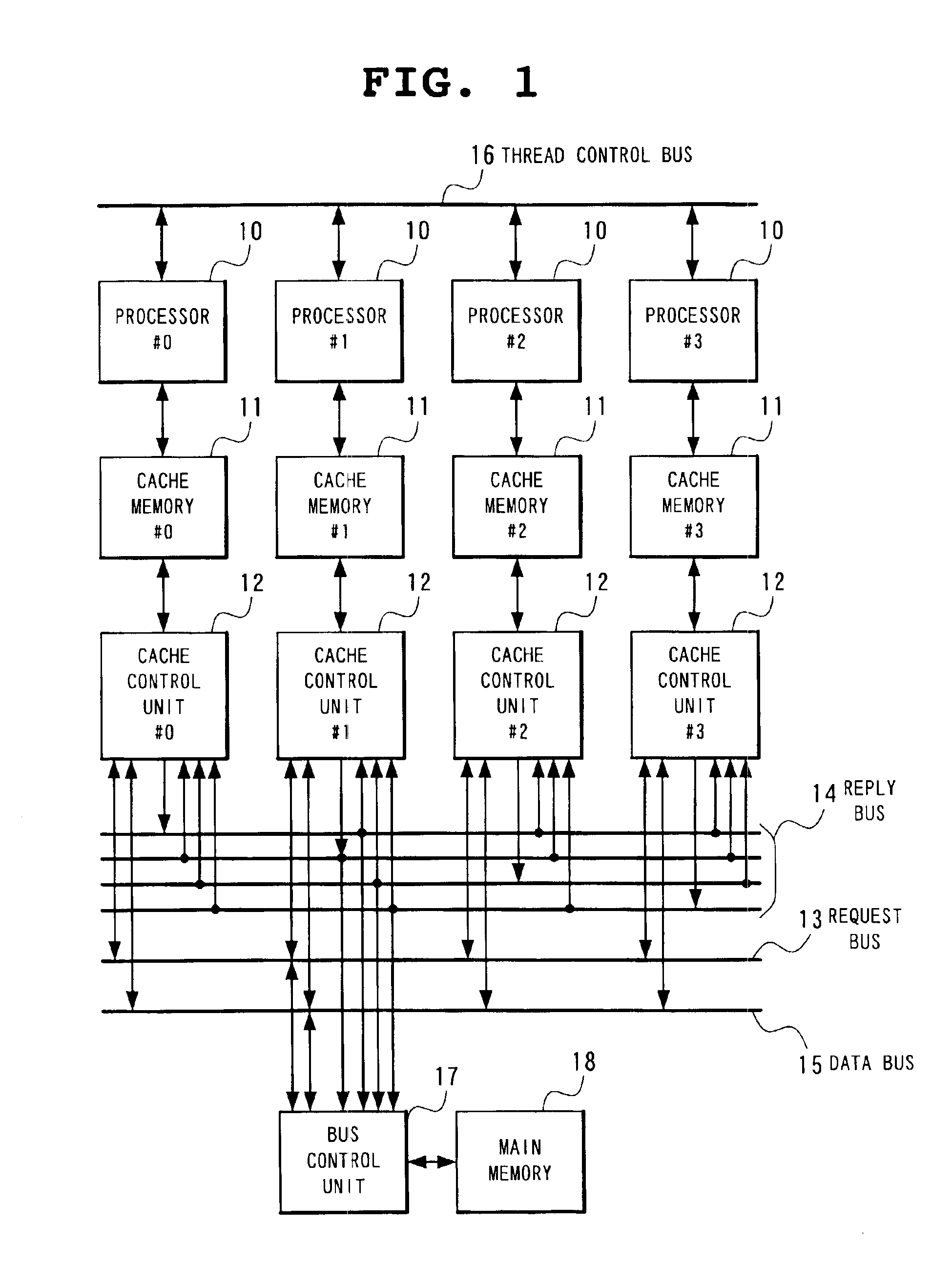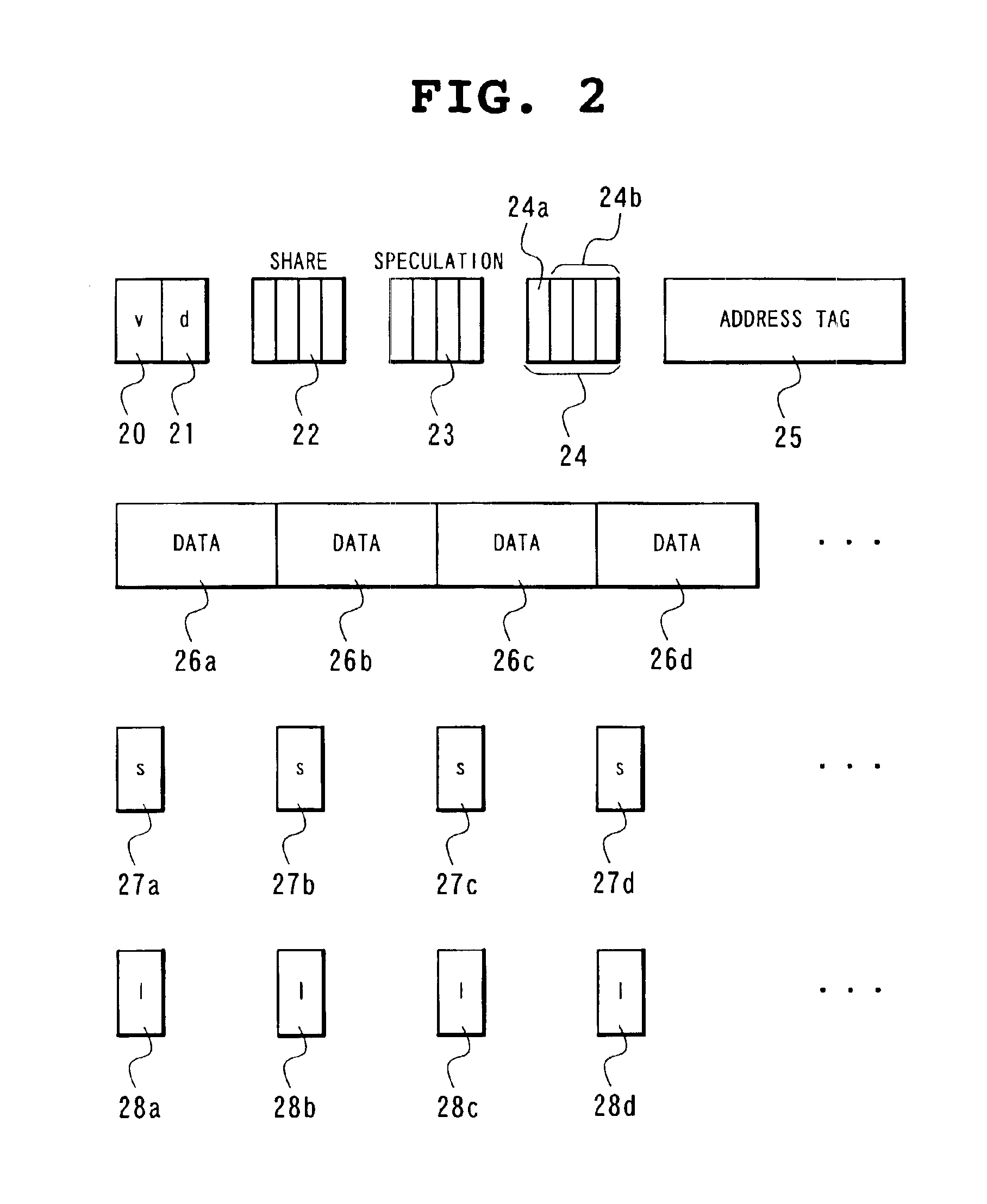Speculative cache memory control method and multi-processor system
a memory control and cache technology, applied in the field of data processors, can solve the problems of inability to obtain the correct result of the program execution, and inability to execute the instructions in the non-program sequence. achieve the effect of speeding up thread parallel processing
- Summary
- Abstract
- Description
- Claims
- Application Information
AI Technical Summary
Benefits of technology
Problems solved by technology
Method used
Image
Examples
second embodiment
[0093]In the example of the cache line shown in FIG. 2, the data entries 26a, 26b, . . . , that are the minimum data units of writing, are respectively provided with the individual store flags 27a, 27b, . . . , and the individual speculation load flags 28a, 28b, . . . . However, a plurality of data entries are represented by a single store flag or a single speculation load flag. For example, FIG. 3 is a cache line provided with one speculation load flag 28a for the four data entries 26a, 26b, 26c, and 26d. The components other than the data entry 26, the store flag 27, and the speculation load flag 28 are omitted. The speculation load flag 28a indicates that the speculative writing is performed on one of the four data entries 26a, 26b, 26c, and 26d. In this case, compared with the case of providing the respective data entries with the respective inherent speculation load flags, it is effective in reducing the hardware amount necessary for installation of a cache memory.
first embodiment
[0094]FIG. 4 is a block diagram showing the detail of the cache control unit 12. With reference to FIG. 4, the cache control unit 12 comprises at least a bus request control unit (reference numeral 30), a cache request control unit (reference numeral 31), a bus request output buffer (reference numeral 32), and a bus request input buffer (reference numeral 33).
[0095]Upon receipt of a notice of a cache miss, a store notice, and the relevant address, the store data, and the state of the cache line from the cache memory 11, the bus request control unit 30 creates a bus request referring to the above and registers it into the bus request output buffer 32. Here, the state of the cache line becomes the cache line including the effective flag 20, the change flag 21, the share flag 22, the speculation flag 23, the update flag 24, and the store flag 27 as shown in FIG. 2, and in case of a cache miss, the bus request control unit 30 indicates the state of the target cache line of the refilling...
PUM
 Login to View More
Login to View More Abstract
Description
Claims
Application Information
 Login to View More
Login to View More - R&D
- Intellectual Property
- Life Sciences
- Materials
- Tech Scout
- Unparalleled Data Quality
- Higher Quality Content
- 60% Fewer Hallucinations
Browse by: Latest US Patents, China's latest patents, Technical Efficacy Thesaurus, Application Domain, Technology Topic, Popular Technical Reports.
© 2025 PatSnap. All rights reserved.Legal|Privacy policy|Modern Slavery Act Transparency Statement|Sitemap|About US| Contact US: help@patsnap.com



